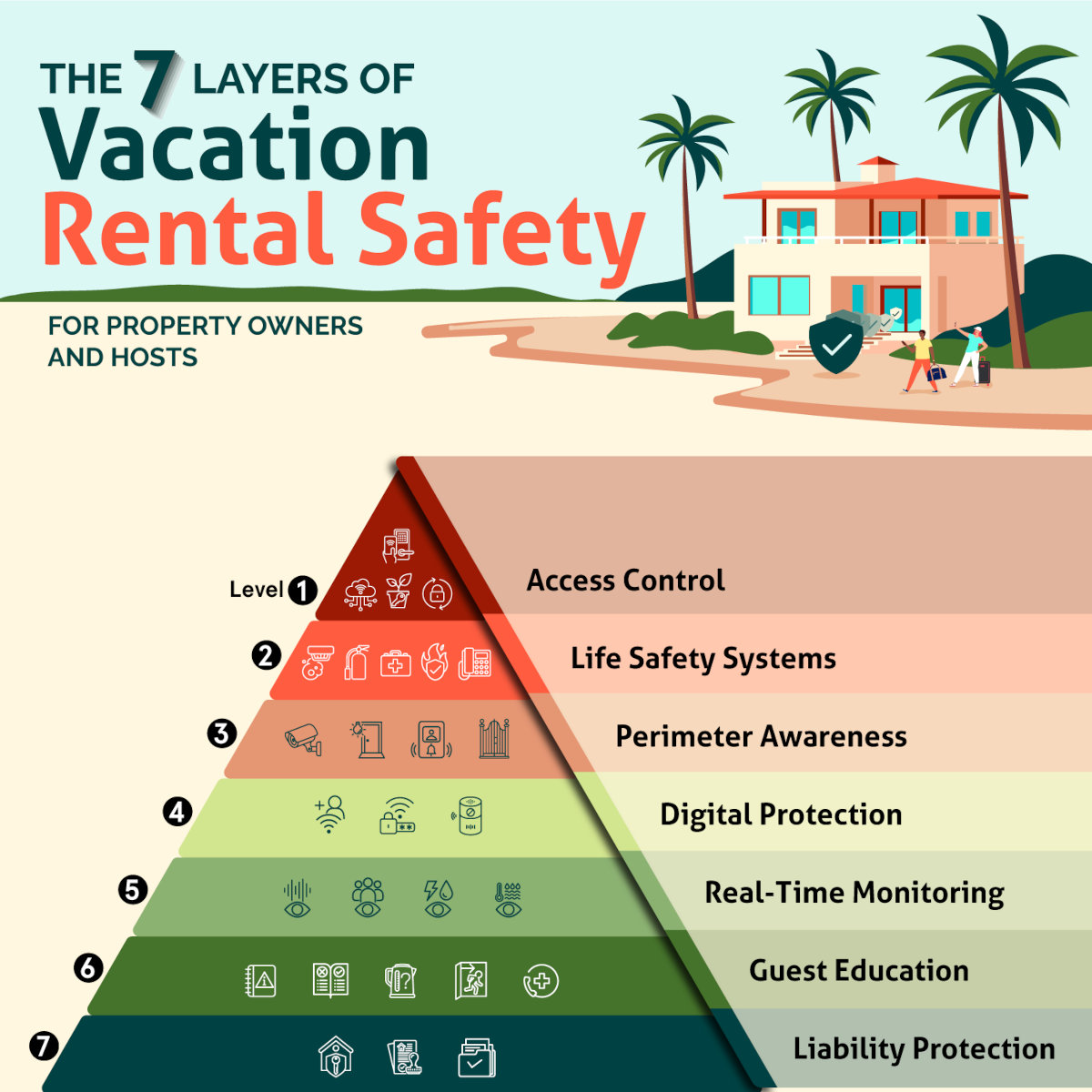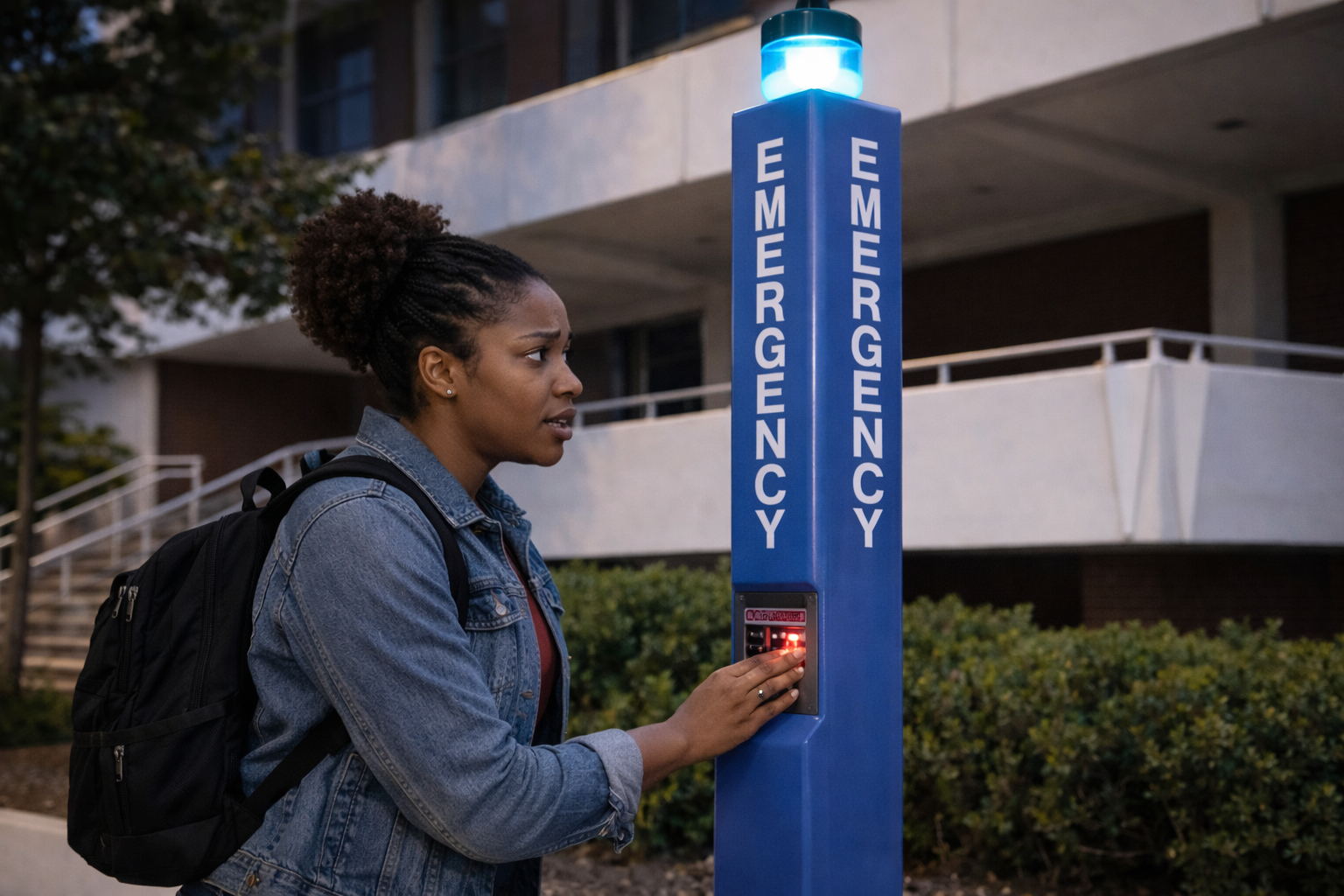The seven layers of vacation rental safety for property owners and hosts

Not long ago, taking a vacation usually meant booking a hotel, limiting your experience to standard rooms, fixed check-in times and hoping for a decent continental breakfast. But today, travelers have more options, thanks to a surge in vacation rentals that has reshaped the way people explore the world. From lakeside cottages to downtown lofts, these rentals offer comfort, character and often better value.
As short-term rentals continue to gain ground on traditional hotels, property owners have stepped into new roles as hosts and managers. What began as a casual way to earn extra income has grown into a legitimate business with serious responsibilities. Opening your doors to strangers, even temporarily, comes with both the potential for financial rewards and a fair amount of risk and vulnerability. Property owners who take on this opportunity must learn to balance being a generous host and a vigilant guardian in order to succeed.
So today, Ooma has deconstructed vacation rental safety, layer by layer, to help owners strike that delicate balance between safety, financial success and providing renters with a great experience.

How risky are short-term rentals?
Like any investment, vacation rentals come with some risks. While the financial benefits can be rewarding, it’s important for hosts to be aware of potential challenges so they can prepare for them and keep both their property and their guests safe.
- Property damage: Accidents happen, and even the most well-meaning guests may occasionally cause damage—from spills or broken items to appliance malfunctions or water issues. Having clear house rules and a system for quick repairs can minimize the impact.
- Liability concerns: If a guest is injured on the property, you may face costs beyond what a standard homeowner’s policy covers. Proper insurance and proactive safety measures (like secure handrails or good lighting) can protect both you and your guests.
- Privacy and data security: Respecting guests’ privacy is essential. Cameras should only be placed in appropriate, disclosed areas, and your Wi-Fi network should be secure to protect sensitive information. Clear communication about these safeguards helps build trust while keeping everyone safe.
- Unauthorized guests: Local laws can be very strict around short-term rentals. Sometimes, they even limit occupancy for rentals, and if your rental party decides to bring along additional unauthorized guests, you might end up liable.
- Noise complaints: Rowdy or disruptive guests can harm your reputation and invite attention from local authorities.
- Theft and squatting: Unoccupied homes risk being broken into, burgled and even inhabited by squatters.
- Technical failures: Remote monitoring or communication tools are great, but only if they work. If these services go offline, you may be left with a false sense of security that everything is going well.
With all of these concerns to balance, how can you consistently manage the risks of short-term hosting? Here’s a safety checklist for short-term rentals that breaks it down into manageable parts.
How to keep a rental property safe
Property access and security
Access control
Controlling who enters the property is the foundation of short-term rental safety. A smart lock or keypad entry system allows you to issue unique, temporary codes to each guest, which will expire after checkout. In addition to reducing the chance of unauthorized re-entry, some locks have cloud-based software that can give you real-time insights into who entered and when.
A physical key remains a good backup but should be hidden in a secure lockbox and designed to be non-duplicable. Always rekey or reset codes between stays, and routinely check the condition of your locks.
Perimeter awareness
Outdoor cameras and smart doorbells at entrances and driveways allow for remote visibility and notifications. Motion-activated lighting along walkways and near doors helps deter intruders and creates a safer environment for guests. Fencing or gates around the property can also define boundaries and add a level of deterrence.
Safety infrastructure and monitoring
Life safety systems
Smoke and carbon monoxide detectors, fire extinguishers and a well-stocked first aid kit are non-negotiables and should be kept in key areas and tested regularly. Compliance with local fire codes and having a reliable landline or VoIP phone are critical, especially in emergency situations.
Real-time monitoring
Noise sensors and occupancy alerts can notify you when guest activity crosses the line. Utility and environmental monitors help you catch problems like water leaks and pipe-threatening temperature drops early on.
Digital and data protection
Digital protection
Provide a separate, password-protected Wi-Fi network for guests, and deactivate smart devices and digital assistants that aren’t needed during a guest’s stay. This prevents unauthorized access to guests’ devices.
Communication, compliance and coverage
Guest education
Prepare a safety guide with clear instructions and house rules, covering emergency exits, appliance use, neighborhood-specific guidance and emergency contact information.
Liability protection
Some providers offer dedicated short-term rental insurance, which may be necessary, as homeowner’s insurance isn’t always sufficient. Additionally, make sure you’re complying with local safety inspections and permitting. Finally, keep records of your safety efforts, including photos, receipts and logs, to protect yourself in case questions arise later.
Short-term rental safety isn’t a one-and-done task but a continuous process of thoughtful preparation, proactive maintenance and clear communication. Each step protects you, your property and your guests.
Seven safety layers for owners and hosts of vacation rental properties
Layer 1: Access control
- Keyless entry systems: Smart locks or keypad entry can be used to set unique codes for each guest that auto-expire, offering a convenient check-in experience while enhancing security.
- Cloud-based access control software: This offers a centralized platform to manage access to multiple properties that provides real-time updates on lock activity, including who accessed the property and when.
- Physical key entry: Include a backup physical key in a secure location, such as a hidden lockbox, and use a key that renters cannot copy.
- Reset access: Rekey locks or change codes between each stay, and schedule regular maintenance to make sure that the smart locks and keypad entry are functioning properly.
Layer 2: Life safety systems
- Smoke and carbon monoxide detectors: Add detectors in every sleeping area, and regularly test to ensure that they are working.
- Fire extinguishers: Add extinguishers to the kitchen and utility room, and replace or recharge them as needed.
- First aid kit: Provide first aid kits that are clearly labeled, and restock them as needed after every guest.
- Fire code compliance: Ensure compliance with local fire safety codes and standards set by the National Fire Protection Association (NFPA).
- Landline or VoIP service: Provide access to emergency services with a working landline or a phone with a Voice over Internet Protocol (VoIP) connection.
Layer 3: Perimeter awareness
- Outdoor cameras: Install outdoor security cameras that are clearly marked at the entrance of the property.
- Outdoor lighting: Motion lights installed along pathways and the driveway and at the front door will keep guests safe and help deter crime.
- Smart doorbells: These allow for remote property monitoring, contactless check-ins and enhanced security.
- Fencing and gates: Install fencing and a gate around the property’s perimeter to define boundaries and deter crime.
Layer 4: Digital protection
- Guest Wi-Fi network: Set up a Wi-Fi network for guests that is separate from your main Wi-Fi network to prevent guests from gaining access to your personal devices and sensitive information.
- Wi-Fi password protection: Create a secure password for the guest Wi-Fi, and periodically change the password to protect the network.
- Disable unused smart devices: Turn off features on your smart devices that won’t be used by guests, such as voice assistants or integration with social media.
Layer 5: Real-time monitoring
- Noise monitoring: Devices that monitor sound levels can alert the property owner when there is excessive noise, which allows you to address the noise quickly and prevent disturbances to surrounding homes.
- Occupancy monitoring: Smart doorbells and outdoor cameras allow the property owner to detect unauthorized access or over-occupancy.
- Utility monitoring: Smart meters track energy and water consumption, improve efficiency and identify sources of waste, such as a water leak.
- Environmental monitoring: Smart thermostats and sensors can track the temperature, humidity and air quality and alert the property owner to potential issues such as a drop in temperature or low air quality.
Layer 6: Guest education
- Guest safety guide: Create digital and/or printed safety guides for guests, and place them in a central location in the home.
- House rules: Clearly outline any house rules in the guest safety guide, such as locking doors and windows and not sharing access codes, as well as any neighborhood-specific safety guidelines.
- Appliance instructions: Provide detailed instructions on how to properly operate appliances that could be potentially hazardous, such as a grill or hot tub.
- Evacuation map: Provide an evacuation map that includes home fire escapes, fire extinguishers and any other safety features in the home. Add clearly marked signage to fire escapes.
- Emergency contacts: Provide a list of emergency numbers for the local police and fire departments as well as a list of nearby hospitals and clinics.
Layer 7: Liability protection
- Vacation rental insurance: Ensure that you have the proper vacation rental insurance coverage to protect your property from claims. Short-term rental insurance can be found through companies like Proper or Safely or through Airbnb’s AirCover for Hosts.
- Local compliance: Maintain your rental property by complying with local safety inspection requirements and obtaining the necessary short-term rental permits.
- Document safety steps: Protect yourself and your property by documenting all safety steps taken and safety equipment with photos, receipts and logs.



